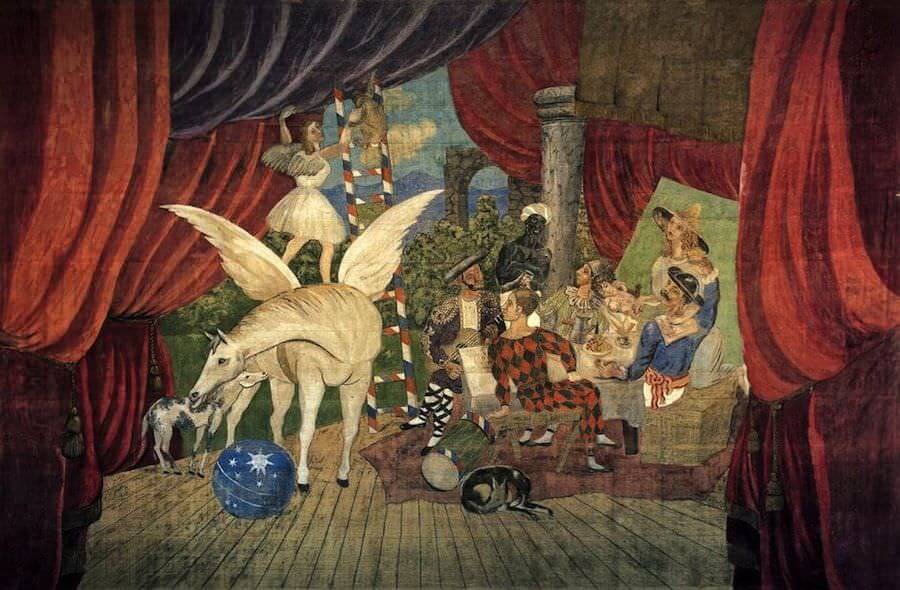Theatre Curtain for Parade, 1931 by Pablo Picasso

The tragic events of the First World War effectively brought to on end many of the radical artistic experiments generated by Cubism. Picasso remained a non-combatant throughout the war, protected from conscription by his Spanish citizenship. However, avant-garde practices, including Cubism, initially fell out of favor, not least of all as many of those who had supported Cubism, such as Picasso's German art dealer Daniel-Henry Kahnweiler, had been forced into exile.
In this climate Picasso's art inevitably changed. One of the catalysts for this change was the writer Jean Cocteau (1889-63), who recruited Picasso into a theatrical venture he was planning. Through Cocteau, Picasso was introduced to the Russian theatrical troupe, the Ballets Russes, starting a collaboration that was highly fruitful for years to come, Picasso's entree into this milieu came with his curtain design for the production of Parade, an avant-garde theatrical extravaganza that opened in Paris in May 1917, Although Parade proved to be a highly controversial production, Picasso's design reflected his move back towards the more romantic representation of street performers that had characterized his earlier work.
















